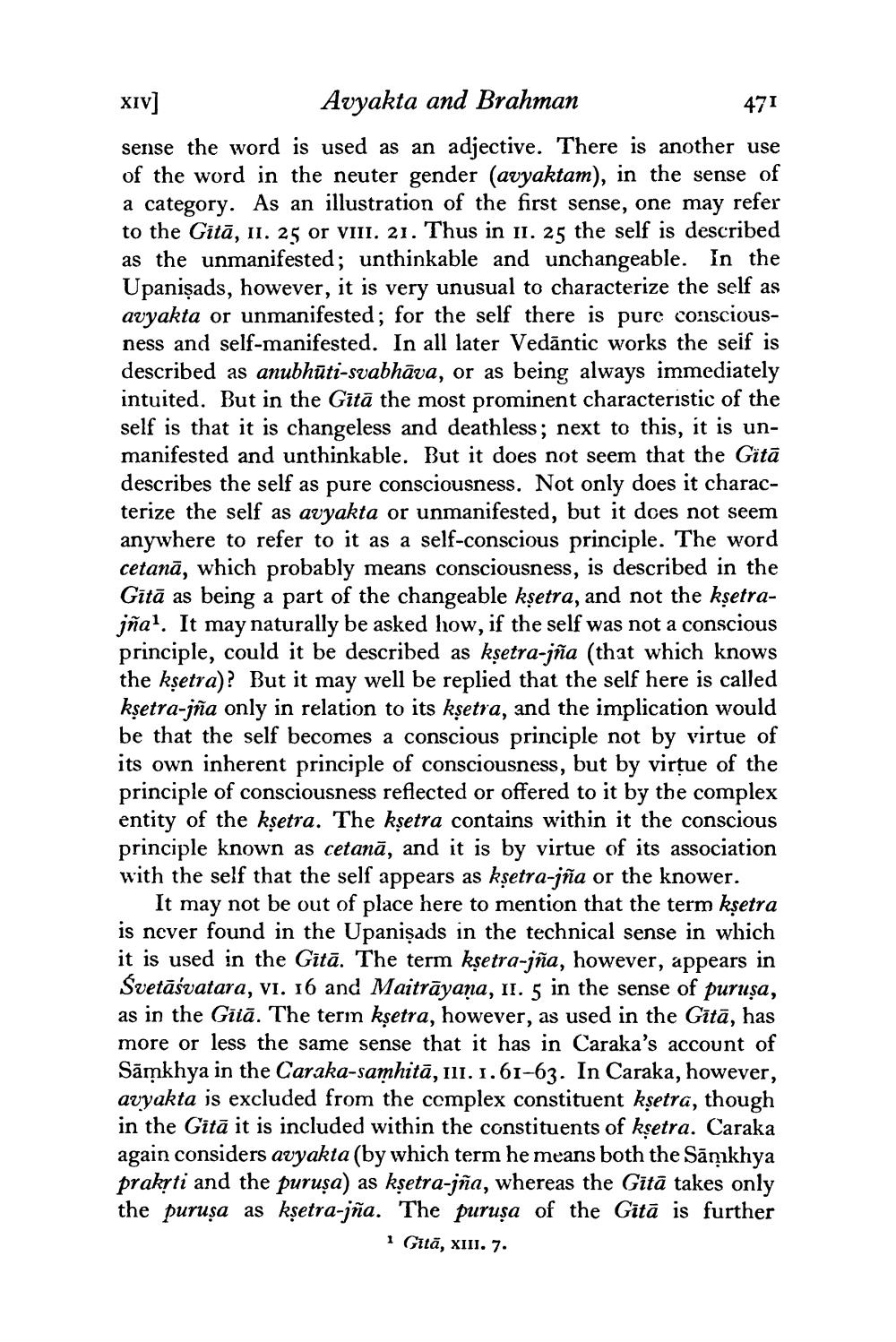________________
471
XIV]
Avyakta and Brahman sense the word is used as an adjective. There is another use of the word in the neuter gender (avyaktam), in the sense of a category. As an illustration of the first sense, one may refer to the Gitā, 11. 25 or VIII. 21. Thus in 11. 25 the self is described as the unmanifested; unthinkable and unchangeable. In the Upanişads, however, it is very unusual to characterize the self as avyakta or unmanifested; for the self there is pure consciousness and self-manifested. In all later Vedāntic works the seif is described as anubhūti-svabhāva, or as being always immediately intuited. But in the Gitā the most prominent characteristic of the self is that it is changeless and deathless; next to this, it is unmanifested and unthinkable. But it does not seem that the Gitā describes the self as pure consciousness. Not only does it characterize the self as avyakta or unmanifested, but it does not seem anywhere to refer to it as a self-conscious principle. The word cetanā, which probably means consciousness, is described in the Gītā as being a part of the changeable kşetra, and not the kşetrajña?. It may naturally be asked how, if the self was not a conscious principle, could it be described as kşetra-jña (that which knows the ksetra)? But it may well be replied that the self here is called kşetra-jña only in relation to its kşetra, and the implication would be that the self becomes a conscious principle not by virtue of its own inherent principle of consciousness, but by virtue of the principle of consciousness reflected or offered to it by the complex entity of the kşetra. The kşetra contains within it the conscious principle known as cetanā, and it is by virtue of its association with the self that the self appears as kşetra-jña or the knower.
It may not be out of place here to mention that the term kşetra is never found in the Upanişads in the technical sense in which it is used in the Gitā. The term kşetra-jña, however, appears in Svetāśvatara, vi. 16 and Maitrāyana, II. 5 in the sense of puruşa, as in the Gitā. The term ksetra, however, as used in the Gitā, has more or less the same sense that it has in Caraka's account of Sāmkhya in the Caraka-samhitā, 111. 1.61-63. In Caraka, however, avyakta is excluded from the complex constituent kşetra, though in the Gitā it is included within the constituents of kşetra. Caraka again considers avyakta (by which term he means both the Sāņkhya prakrti and the puruṣa) as kşetra-jña, whereas the Gitā takes only the puruşa as kşetra-jña. The puruşa of the Gitā is further
1 Gitā, XIII. 7.




